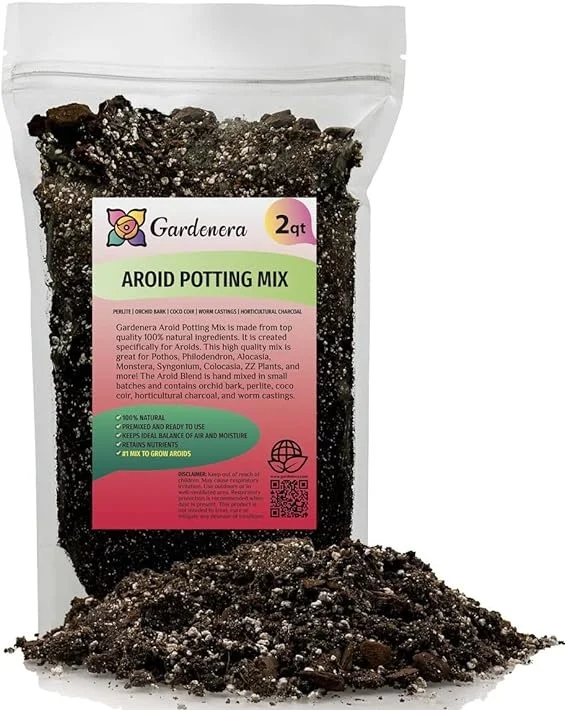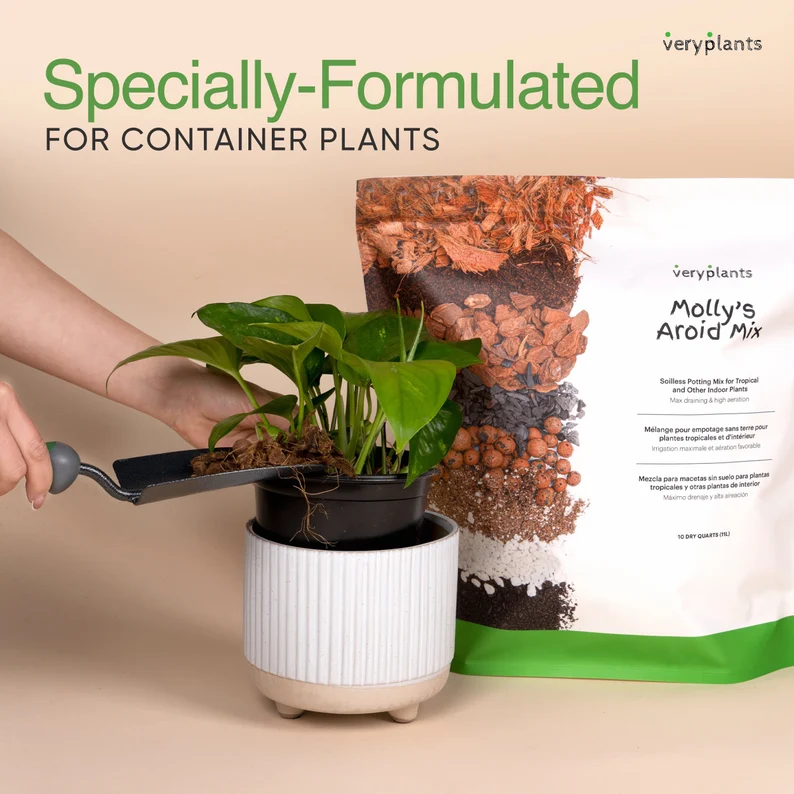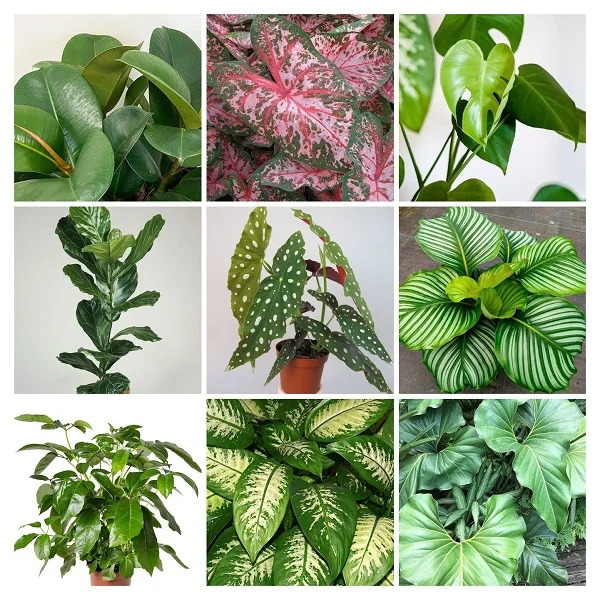Lacy Tree Philodendron (Philodendron selloum) Indoor Care, Propagation and Common Problems
Some links in this post may be affiliate links
Lacy Tree Philodendron (Philodendron selloum) thrives in medium to bright indirect light, warm and humid conditions and moderately moist, rich, well-drained soils coupled with monthly feeding during the growing season.
This guide covers everything from light, watering, feeding to propagation and common care mistakes and how to tackle them. Before diving into care tips, let’s get to know this magnificent plant a little better.
Philodendron selloum also called Tree Philodendron is one of the easy-care, non-climbing, large, Philodendron varieties and is most impressive in a large space.
The leaves are simple, large, deeply lobed, ruffle-edged, usually drooping and dark green in color. The trunk is relatively thick and woody with characteristic "eye-drop" leaf scars.
Tree Philodendron produces aerial roots from the stems and these root have an important part to play. Push them into the soil to provide moisture for the upper leaves. Flowers rarely appear under room conditions.
Philodendron selloum is also known by the botanical names Thaumatophyllum bipinnatifidum and Philodendron bipinnatifidum.
Thaumatophyllum bipinnatifidum and its relatives Philodendron 'Summer Glory' and Philodendron selloum 'Sun Red' are non-climbing, upright bushes which are spectacular in a pot. Use a moss pole to give it support and encourage growth of the large, beautiful leaves.
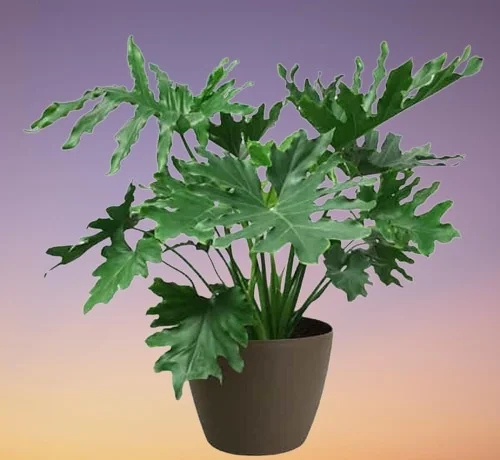
Botanical name: Philodendron selloum
Synonyms: Thaumatophyllum bipinnatifidum, Philodendron bipinnatifidum
Family: Araceae
Common names: Lacy Tree Philodendron, Tree Philodendron, Splitleaf Philodendron
Origin
Philodendron selloum is native to South America in Brazil, Bolivia, Argentina and Paraguay. In its tropical natural habitat, Tree Philodendron is known for its ease in covering land mass and typically spreads out its tree-like trunk from between 8-10 feet.
How big do Lacy Tree Philodendrons get?
Indoors, Lacy Tree Philodendrons can grow to a height of 5-6 feet. The leaves can grow up to 2 feet long and are attached to long smooth petioles about 2 feet long. It is one of the best tree-like plants to spruce up the home.
Air Cleaning
According to the NASA Clean Air Study, Lacy Tree Philodendron was found to be among the best air-purifying plants and gets rid of trichloethylene from indoor air.
Varieties
One common variant of Philodendron selloum is Philodendron bipinnatifidum 'Hope' also called Thaumatophyllum bipinnatifidum 'Hope' which is a shorter plant, maturing at the height of about 4 feet. Its leaves are slightly smaller about 1.5 feet long, smooth-edged and more solid, attached to 1.5 feet long petioles.
Another common variant of Philodendron selloum is Philodendron bipinnatifidum 'Xanadu' also called Thaumatophyllum bipinnatifidum 'Xanandu' which has a mounding growth habit.
A look-alike plant but quite different from Philodendron selloum is Monstera deliciosa (Swiss Cheese Plant) whose leaves have holes rather than the seperated lobes in Philodendron selloum.
Toxicity
As indicated by the American Society for the Prevention of Cruelty to Animals, Lacy Tree Philodendron is toxic to both humans and pets. It contains Calcium oxalate crystals which if ingested, can cause burning and swelling in the mouth and throat, vomiting, diarrhea and abdominal pains. Keep the plant from the reach of children and pets.
Where to Buy
If you are looking to add this tree-like Philodendron to your plant collection, you may obtain them online from Etsy (Link to Etsy) or from Amazon (Link to Amazon).
How do you take care of Lacy Tree Philodendron indoors?
To care for Lacy Tree Philodendron give it medium to bright indirect light (dappled light), average warmth of 18-260C, humidity of 55-65% and moderately moist, rich, well-drained soil coupled with monthly feeding during the growing season.
Philodendron selloum care requires regular pruning to keep the plant neat, to encourage a compact, bushy growth and to rejuvenate growth. Repotting is needed every 2-3 years to provide adequate space for growth. Keep reading for more on these growing conditions and how to achieve them.
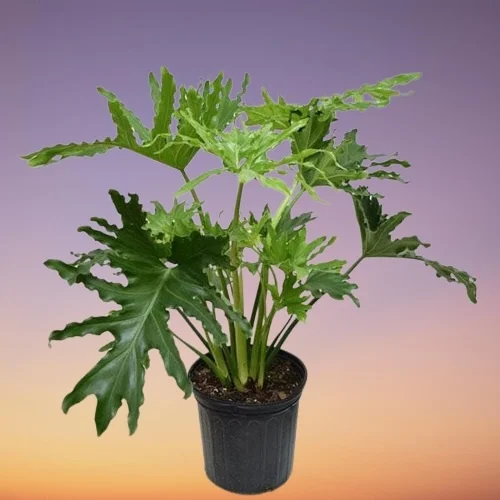
Watering
Water your Lacy Tree Philodendron thoroughly during the growing season while allowing the top 2-3 inches of soil to dry out between waterings. Keep the soil moderately moist but never soggy to avoid yellowing of leaves and rotting of stems.
Reduce watering in the cold period (fall and winter) as growth is minimal at this time. But do not allow the soil to dry out completely to prevent wilting and drooping leaves.
Tree Philodendron cannot tolerate soggy soil. Therefore, ensure that the pot has a drainage hole to prevent the soil from getting soggy soil as it can lead to root-rot and death of the plant.
Use room temperature water to avoid shocking the roots of this tropical plant as it can result in stunted growth. In addition, make sure that the water is chlorine-free to avoid leaf spots, yellowing, leaf drop and plant death.
Light Requirements
Lacy Tree Philodendron grows best in medium to bright indirect light (filtered light). Keep it away from hot direct sunlight to prevent scorching of the leaves.
If the lighting is not adequate, the plant will start stretching, becoming leggy and may drop its leaves. Therefore, you may use a grow light to supplement the natural light.
Regularly turn the pot to ensure that the plant receives light on all sides for uniform growth and avoid leggy and lopsided growth.
Temperature and Humidity
Lacy Tree Philodendron prefers an average warmth of 18-260C. Keep it away from cold and hot drafts as they can cause leaf drop and reduced growth.
Tree Philodendron likes a humidity of 55-65% to prevent brown leaf edges and tips. However, it can withstand dry air for short periods of time.
To increase humidity, set the pot on a wet pebble tray, use a cool mist humidifier or grow the plant in a well-lit bathroom, kitchen and other humid areas in the home. Make sure that there is good ventilation to avoid fungal diseases.
Fertilizer
Feed your Lacy Tree Philodendron every 4 weeks during the growing season with a balanced water-soluble fertilizer for lush growth. Avoid too much fertilizer as it can lead to leggy growth.
Do not feed in the cold season (fall and winter) as growth is minimal at this time and feeding at this time can lead to fertilizer burn and death of the plant.
Potting Soil
What kind of soil does Lacy Tree Philodendron like?
The best soil for Lacy Tree Philodendron should be a slightly acidic to neutral (PH 5.5 to 7.5), aerated, and well-draining soil to prevent root rot and compaction. A mix of 50% potting soil, 30% peat moss or coconut coir, and 20% perlite or orchid bark is perfect. Soils designed for aroids are also ideal for this plant.
Repotting
Repot Lacy Tree Philodendron every 2-3 years during the growing period. Use a pot that is 1 size larger than the current one. Ascertain that the pot has a drainage hole to prevent the soil from getting soggy as it can lead to root-rot.
Use a heavy container to prevent the Tree Philodendron from toppling over as it can become top-heavy. Check out these ceramic pots with drainage holes on Amazon.
Pruning & Grooming
Pruning Lacy Tree Philodendron involves:
- Removal of yellow and dead leaves to maintain the plant neat and minimize pest and disease infestations.
- Cutting back leggy stems at the beginning of the growing season to rejuvenate growth and encourage a bushy, compact growth.
Ocassioanally clean the leaves by damp-wiping with a soft cloth to get rid of dust and also to discourage pest infestation.
Lacy Tree Philodendron Propagation
Lacy Tree Philodendron (Philodendron selloum) is propagated from stem cuttings during the growing season (late spring to early summer) when the plant is actively growing.
How to propagate Lacy Tree Philodendron from stem cuttings
- Take a stem cutting of about 4-5 inches long from a healthy plant.
- Select a 6 or 8 inches pot and ensure that the pot has a drainage hole to prevent the soil from getting soggy to avoid rotting.
- Fill the pot with well-drained, potting mix and moisten the soil slightly.
- Make a hole in the center of the pot and ensure it is wider that the base of the cutting.
- Insert 2-3 inches of the lower cut end of the cutting in the hole made above.
- Position the set up in a warm, brightly lit spot away from direct sunlight.
- Maintain the soil moist through out until the new plant are well established.
- Once well established, repot the new plants into a pot 1 size larger than the current one in well-draining soil.
- Place the new plants in a warm spot under bright indirect light and begin routine care.
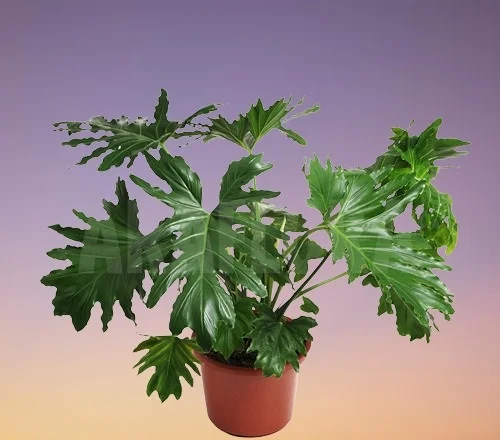
Philodendron selloum Problems & Solutions
Lacy Tree Philodendron problems are plant dying, yellow leaves, brown leaves, brown leaf tips and edges, rotting stems, diseases and pests among others. Keep reading for more on these problems and how to fix them.
Plant dying
Why is my Tree Philodendron dying?
Your Tree Philodendron is dying due to root-rot disease which is prevalent in soggy soil. The disease is characterized by yellowing and browning followed by plant collapse.
How to fix it
- Slip the plant out of its pot, trim rotten roots, and treat the healthy roots with a copper-based fungicidal solution.
- Repot the plant in well-draining soil and keep it dry for 5-7 days before watering to help it recover.
- Use a pot with a drainage hole and free-draining soil to prevent the soil from getting soggy.
Yellow leaves
Some of the causes of yellow leaves on Lacy Tree Philodendron are overwatering, soggy soil, direct sunlight and nutrient deficiency.
How to fix it
Overwatering: Do not water on a schedule. Water only when the top 2-3 inches of soil feel dry.
Soggy soil: Use a well-draining potting soil and a pot that has a drainage hole.
Direct sunlight: Keep the plant away from direct sunlight or filter the sunlight with a light curtain or sheer curtain.
Nutrient deficiency: Apply a balanced, water-soluble fertilizer every 4 weeks in spring and summer.
Brown leaves
Some of the causes of brown leaves on Lacy Tree Philodendron are direct sunlight, low humidity, and underwatering.
How to fix it
Direct sunlight: Keep the plant away from direct sunlight or instal a light curtain or sheer to filter the sunlight.
Low humidity: Set the pot on a wet pebble tray, use a humidifier or group the plants together.
Underwatering: Water when the top 2-3 inches of soil dry. Never allow the soil to dry out completely.
Brown papery leaf tips and edges
Brown papery leaf tips and edges on Lacy Tree Philodendron are caused by dry air and being pot-bound.
How to fix it
Dry air: To raise humidity, set the pot on a wet pebble tray or use a humidifier.
Being pot-bound:. Repot the plant every 2-3 years into a pot 1-2 sizes larger.
Leggy growth
Leggy growth and small pale leaves on Lacy Tree Philodendron is caused by too little light and overfeeding.
How to fix it
Too little light: Move the plant to a more brighter spot or instal a grow light if the natural light is inadequate.
Overfeeding: Take care not to overfeed; fertilize monthly in spring and summer, do not feed in fall and winter.
Rotting stems
Rotting stems on Lacy Tree Philodendron is an indication of stem-rot disease which is promoted by high moisture and too little warmth. You can save the plant by repotting and keeping the soil dry and warm for a period of time before watering it again.
Pests
Common pests for Lacy Tree Philodendron are mealybugs, scales and aphids. Isolate the affected plant to prevent spread to other plants and treat it with neem oil or insecticidal soap as per the manufacturer's recommendations.
Conclusion
Lacy Tree Philodendron is an easy-going, bold, tropical statement plant that will elevate any indoor space. With the correct care, it will reward you with stunning, jungle-like foliage year-round.
Frequently Asked Questions
1. Can I grow Lacy Tree Philodendron in low light?
Yes, but it will grow much slower. It thrives best in bright, indirect light.
2. Is Lacy Tree Philodendron pet-friendly?
No, Lacy Tree Philodendron is toxic to cats and dogs if ingested. Keep it out of reach of curious pets.
3. Why are the leaves of my Lacy Tree Philodendron turning pale or leggy?
It’s likely that your Lacy Tree Philodendron is not getting enough light. Move it closer to a window or supplement with grow lights.
4. How big does a Lacy Tree Philodendron get indoors?
Indoors, Lacy Tree Philodendron can grow up to 5 feet tall with wide-spreading leaves. Give it enough space to shine. It is best suited for the large spaces.
5. How often should I clean the leaves of my Lacy Tree Philodendron?
Too much dust on the leaves can block sunlight, so wipe the leaves with a damp cloth every few weeks.
You liked it? Share on social media.
Related Content
Amazon Associates Disclosure
Homeplantsguide.com is a participant in the Amazon Services LLC Associates Program, an affiliate advertising program designed to provide a means for sites to earn advertising fees by advertising and linking to amazon.com.
